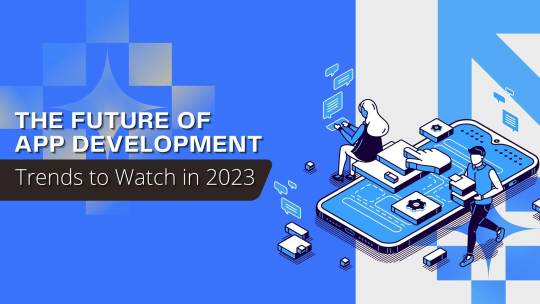#graphic design trends 2023
Text
What is Graphic Design?
Before we begin to answer how to make money as a graphic designer, it’s essential to understand precisely what graphic design is.

Essentially, graphic design is finding visual solutions for a specific purpose, whether that’s to make someone want to purchase a product, watch a television show, or come to a large event. Graphic design truly encapsulates almost every visual aspect of your life.
Within graphic design, there are a few different buckets that you might choose to specialize in, including package design, layout design, branding and logo design, or even typography if you’re interested in making fonts and playing with type.
Each bucket is equally as important, though some niches might pay a bit more depending on your skill level.
#graphic design#what is graphic design#graphic designer#graphic design tips#graphic design career#how to become a graphic designer#graphic design education#freelance graphic designer#graphic design basics#what is graphic design in hindi#graphic design tutorial#learn graphic design#what is graphic designing#graphic design course#graphic design portfolio#graphic#graphic design trends 2023#design#graphic design for beginners#graphic design fundamentals
4 notes
·
View notes
Video
youtube
The latest graphic design trends that will be on top in 2023.
Take a close look at some modern design examples to inspire you for your next project.
#graphic design#design trends#trending design#graphic design trends 2023#design trends 2023#2023#modern design#design ideas#design trend
0 notes
Photo

The Top Graphic Design Trends You Need to Know in 2023
See them all here.
Follow WE AND THE COLOR on:
Facebook I Twitter I Pinterest I YouTube I Instagram
16 notes
·
View notes
Text






Movie Poster's...
#adobe photoshop#photoshop#jamnagar#ahemdabad#graphic design#art#graphic art#my graphics#2023#movie poster#digital artist#viralpost#trending#repost#like#fast x#fast x movie#john wick
5 notes
·
View notes
Link
“Accessible design is the intent to design products and services that people with a range of physical access needs can use.” (Feredey, C., in It’s Nice That, 2023)
There’s still a long way for the design industry to become inclusive and until the design industry won’t reflect the diversity of our society and communities we design for, designers may fall into the standardised solutions and processes that have always existed.
Becoming a more diverse industry requires effort and proactive action to build a new way of working and interacting with people that is different to what we have been doing until now.
Collaborating directly with voices who have been historically excluded from design is surely the only way to reach an inclusive future, yet it’s still not happening on scale. “Creatives with learning disabilities are often overlooked for commercial design commissions,” Tom Dorkin, studio manager at Intoart and Trifle Studio explains.
Co-design is a great yet underutilised approach to increase diverse and inclusive processes, from research to implementation.
#design#inclusive design#design trends#2023#graphic design#designthinking#product design#human centred design#accessible design#accessibility#co-design#diversity#design industry
3 notes
·
View notes
Text
The Future Of App Development: Trends to Watch in 2023

Are you ready to dive into the exciting world of app development and discover what lies ahead in 2023? Whether you’re a seasoned developer or just getting started, this blog post is your ultimate guide to the future trends that will shape the industry. From mind-boggling advancements in artificial intelligence to revolutionary shifts in user interface design, we’ll explore how these innovations are set to transform the way we interact with apps. So buckle up as we take a thrilling ride through time and uncover the cutting-edge technologies that will define app development in 2023!
Introduction to the current state of app development and its impact on society
The world of app development has been rapidly evolving in recent years, with new technologies and trends constantly emerging. Mobile apps have become an integral part of our daily lives, providing us with convenient access to information, services, and entertainment. As the demand for apps continues to grow, so does their impact on society.
In this section, we will explore the current state of app development and its influence on society. We will delve into the various factors that have led to the growth of this industry and how it has shaped our daily lives.
The rise of AI and machine learning in app development
In recent years, there has been a significant increase in the use of Artificial Intelligence (AI) and Machine Learning (ML) in app development. These technologies have revolutionized the way we interact with our mobile devices and have opened up new possibilities for creating innovative and personalized apps.
One of the main reasons for the rise of AI and ML in app development is their ability to process large amounts of data quickly and accurately. This allows developers to create apps that can learn from user behavior, preferences, and patterns to provide a more personalized experience. As a result, users are more likely to engage with these apps, leading to higher retention rates and increased revenue for businesses.
Another factor contributing to the growing popularity of AI and ML in app development is their ability to automate tasks that were previously done manually. This not only saves time but also reduces human error and increases efficiency. For instance, virtual assistants like Siri or Google Assistant use natural language processing (NLP) technology powered by AI to understand user commands and perform tasks such as setting reminders or searching for information online.
Moreover, AI-powered chatbots have become increasingly common in customer service apps, providing instant responses 24/7 without involving human agents. They can handle multiple queries simultaneously, ensuring a seamless user experience while reducing operational costs for businesses.

The importance of user experience and design in app development
In recent years, the importance of user experience (UX) and design in app development has become increasingly recognized. It is no longer enough for an app to simply function well – it must also provide an enjoyable and intuitive user experience. As the world becomes more digitally connected, users have come to expect a certain level of sophistication and ease-of-use from the apps they use.
Understanding User Experience
User experience refers to the overall experience a person has while using an app or website. This includes not only the usability of the interface, but also how engaging and satisfying the interaction is for the user. In other words, UX is about making sure that every aspect of an app works seamlessly together to create a smooth and enjoyable experience for the user.
A good UX design takes into consideration factors such as visual appeal, navigation, performance speed, functionality, and accessibility. The goal is to create an app that is not only easy to use but also feels natural and intuitive for users.
Importance of User Experience in App Development
The success of any mobile application heavily relies on its ability to attract and retain users. A well-designed user experience plays a crucial role in this regard as it can significantly impact user satisfaction levels and ultimately determine whether or not they continue using your app.
Integration of virtual and augmented reality in apps
The integration of virtual and augmented reality in apps has been a growing trend in the world of app development. With the advancement of technology, developers have been able to create immersive experiences through the use of these technologies. In this section, we will explore how virtual and augmented reality are being integrated into apps and what impact it may have on the future of app development.
Virtual reality (VR) is a computer-generated simulation that immerses users in a 3D environment. It usually requires specialized equipment such as headsets or goggles to fully experience the environment. On the other hand, augmented reality (AR) overlays digital information onto the real world through the use of devices such as smartphones or tablets.
One major application for VR and AR integration in apps is gaming. Virtual reality games allow players to fully immerse themselves in a virtual world, providing an even more realistic and engaging experience than traditional gaming methods. Augmented reality games, on the other hand, allow users to interact with their surroundings by overlaying digital elements onto their real environment.
Apart from gaming, VR and AR are also being used in educational apps. Virtual reality can transport students to different places around the world or even back in time, providing them with an interactive learning experience like never before. Augmented reality can also bring textbooks to life by overlaying relevant information onto images or texts.
In addition to gaming and education, there are also various applications for VR and AR integration in industries such as healthcare, retail, tourism, and marketing.
Blockchain technology and its potential in app development
Blockchain technology, although originally developed for use in cryptocurrency, has now expanded its reach to various industries and is making a significant impact in the world of app development. In simple terms, blockchain is a decentralized digital ledger that records transactions across multiple computers or systems. The data stored in a blockchain is secure, transparent and tamper-proof, making it an ideal solution for many modern-day challenges.
What is Blockchain Technology?
Blockchain technology was first introduced with the creation of Bitcoin in 2008 by Satoshi Nakamoto. It revolutionized the concept of digital currency by providing a secure and transparent way to carry out financial transactions without the need for intermediaries such as banks or government agencies. Since then, blockchain technology has evolved to become much more than just a tool for financial transactions.
At its core, blockchain is simply a chain of blocks that contains transactional data. Each block contains information about the previous block, creating an unbreakable chain of data blocks connected together. This distributed ledger system makes it impossible to alter any previous transaction records without affecting all subsequent ones.
How Does Blockchain Work?
The fundamental principle behind blockchain technology is decentralization – eliminating the need for central authorities to validate and record transactions. Instead, each node on the network maintains its own copy of the ledger and verifies new transactions before adding them to their version of the chain.
The shift towards low-code/no-code platforms for app creation
The world of app development is constantly evolving, with new technologies and tools emerging to revolutionize the way apps are created. One of the most significant changes in recent years has been the shift towards low-code and no-code platforms for app creation.
Traditionally, creating a mobile or web application required extensive coding knowledge and skills. This meant that only a small group of highly trained professionals could develop an app, making it a lengthy and expensive process. However, with the rise of low-code/no-code platforms, this barrier has been broken down, allowing virtually anyone to create their own app without any coding experience.
So what exactly are low-code and no-code platforms? Simply put, they are visual development environments that use drag-and-drop interfaces to build apps instead of writing code from scratch. Low-code platforms require some basic coding knowledge but still offer a simplified approach to app development. On the other hand, no-code platforms require zero coding skills as they provide pre-built modules that can be easily pieced together to create an app.
One of the main reasons for the growing popularity of these platforms is their ability to significantly reduce development time and costs. With traditional methods, developing an app could take months or even years depending on its complexity. But with low-code/no-code platforms, apps can be built in a matter of days or weeks. This not only saves time but also makes it more affordable for businesses and individuals to enter into the world of app development.
Impact of 5G technology on app development
The emergence of 5G technology has brought about significant changes in various industries, and the app development sector is no exception. With its lightning-fast speed, high bandwidth, and low latency, 5G is set to revolutionize the way apps are developed and used. In this section, we will explore the impact of 5G technology on app development and how it will shape the future of this industry.
1. Faster App Performance
One of the most significant impacts of 5G on app development is its ability to provide faster performance. With speeds up to 20 times faster than 4G networks, developers can now create more complex and data-intensive apps without worrying about slow loading times. This means that apps can process large amounts of data in real-time, providing a seamless user experience.
Moreover, with lower latency rates (the time it takes for devices to communicate with each other), there will be minimal delay between actions taken by users and their response from the app. This will improve the overall responsiveness and fluidity of apps, making them more efficient and enjoyable to use.
2. Enhanced Capabilities with Augmented Reality (AR) & Virtual Reality (VR)
The increased speed and low latency provided by 5G technology open doors for more advanced AR/VR experiences in apps. These immersive technologies require a lot of data processing power and fast internet connections to function seamlessly. With 5G networks in place, developers can create highly interactive AR/VR experiences that were not possible before .
For example, 5G will enable real-time streaming of high-quality virtual reality content, making it possible for users to experience events and places virtually in real-time. This could have a significant impact on industries such as gaming, education, healthcare, and entertainment.
3. Internet of Things (IoT) Integration
The IoT industry is expected to grow significantly with the rise of 5G technology. With its increased bandwidth and low latency rates, 5G will be able to support a massive number of connected devices simultaneously. This means that developers can create more sophisticated apps that can control multiple IoT devices seamlessly.
For instance, with 5G networks in place, smart home apps can control various appliances and devices in different rooms without any delay or disruption. This opens up new opportunities for app developers to tap into the growing demand for IoT-enabled products and services.
4. Increased Personalization
With faster data speeds and low latency rates, app developers can now collect and process large amounts of user data in real-time. This enables them to personalize the user experience based on individual preferences and behavior patterns.
Predictions for the future of app development in 2023
As technology continues to advance at a rapid pace, the future of app development is poised for significant growth and innovation. With the rise of emerging technologies such as artificial intelligence (AI), augmented reality (AR), and Internet of Things (IoT), the app development landscape is set to undergo major transformations in the coming years.
Here are some predictions for what we can expect to see in the world of app development by 2023:
1. Increased Integration of AI: Artificial intelligence has already made its way into many aspects of our daily lives, from virtual assistants like Siri and Alexa to personalized recommendations on social media platforms. In the next few years, we can expect to see even more apps utilizing AI technology to offer smarter and more personalized experiences for users. This could include chatbots for customer service, predictive analytics for better decision-making, and voice recognition for improved user interfaces.
2. The Rise of Progressive Web Apps: Progressive web apps (PWAs) have gained popularity in recent years due to their ability to provide a native app experience through a web browser. These apps combine the best features of both websites and mobile apps, making them faster, more responsive, and easier to use than traditional native apps. By 2023, PWAs are predicted to become even more prevalent as businesses seek cost-effective ways to deliver high-quality app experiences without having to develop separate versions for different platforms.
Conclusion
As technology continues to advance at a rapid pace, the future of app development is full of possibilities. From augmented reality and artificial intelligence to 5G connectivity and voice interfaces, these trends are set to shape the way we interact with apps in 2023 and beyond. By staying informed about these developments, businesses can stay ahead of the curve and create innovative and user-friendly apps that will thrive in this ever-evolving industry. The future looks bright for app developers as they continue to push boundaries and revolutionize the way we use technology in our daily lives.
#The Future Of App Development: Trends to Watch in 2023#app development#web devlopment#software devlopment company#web development#digital marketing#app devlopment#webdevelopment#web design#graphic design
0 notes
Text
#donald trump#trump#trump 2024#trump 2023#trump mugshot#trump president#artists on tumblr#merch by amazon#1950s#80s#graphic design#70s#vintage shirt#trump usa#trump shirt#funny shirt#trump memes#trump maga#trump design#trend shirt#trend 2023
0 notes
Photo

Top Graphic Design Trends in 2023
More »
https://cgfrog.com/top-graphic-design-trends-in-2023/
#2023#Design Trends#Graphic Design Trends#Graphic Design Trends in 2023#Articles#Design Tips and Tricks#DIY
1 note
·
View note
Text
To Rock 2023, Try These Amazing Trendy Design T-shirts
Shop for trendy design t-shirt 2023 like T-shirts with motivational quotes, Nature T-Shirt Designs, A funny or humorous T-shirt, Bollywood T-shirt, Graphic T-Shirts, T-Shirt with Cartoon Characters at best price.
#Trendy Design T-shirts 2023#T-shirts with motivational quotes#Nature T-Shirt Designs#A funny or humorous T-shirt#Bollywood T-shirt#Graphic T-Shirts#T-Shirt with Cartoon Characters#T-shirt trends of 2023
0 notes
Text
Virat Kohli Indian Cricketer Ai Artwork.

#virat kohli#cricket#art#artwork#design#graphic design#viratfans#my artwrok#artworld#ai artist#ipl 2023#midjourney#trending#viraltopic#viral trends
1 note
·
View note
Photo

Hot Graphic Design Trends for 2023
More here.
Follow WE AND THE COLOR on:
Facebook I Twitter I Pinterest I YouTube I Instagram
19 notes
·
View notes
Text

Gif ...
#adobe photoshop#photoshop#ahemdabad#graphic design#jamnagar#art#graphic art#my graphics#2023#gif#viralpost#like#repost#mercedes#cars#trending
2 notes
·
View notes
Video
youtube
15 Graphic Design Trends for 2023
Understanding and leveraging trends in graphic design is a great way to stay creatively inspired, culturally relevant and to assure your success as a creative entrepreneur. In this video, I share 15 Trends in Graphic Design for 2023 you can use in your creative business and your work with clients. Join me in exploring these contemporary trends you can use to inspire your designs and build your brand!
1. SYSTEMATIC
2. MIDJOURNEY + AI
3. COLLAGE
4. HOLO-MORPH
5. MILITARY INSPIRED
6. DARK MODE TYPOGRAPHY
7. NEU-BRUTALISM
8. 70’S TYPOGRAPHY
9. LENSA-TION
10. GEO-SIMPLICITY
11. CYBER WAVE
12. THE BLOB
13. VAPORWAVE 3.0
14. GLOBAL VOICE
15. VIVA MAGENTA
#youtube#15 Graphic Design Trends for 2023#Graphic Design Trends for 2023#Graphic Design for 2023#graphic design#graphic design trends#designtrends#marketing#branding#trends#education#educational#graphic design tips#educate yourselves
1 note
·
View note
Photo

List Of Graphic Design Trends That Will Dominate 2023 - Ready to learn which design innovations will dominate in 2023? The list is not ordered in any particular way so keep reading to find out what graphic design trends have in store. #ucollectinfographics #ucollect #alter #infographic #2023Trend, #Design, #Graphic Read more: https://www.ucollectinfographics.info/?p=113575
1 note
·
View note
Text
The Future Of App Development: Trends to Watch in 2023

Are you ready to dive into the exciting world of app development and discover what lies ahead in 2023? Whether you’re a seasoned developer or just getting started, this blog post is your ultimate guide to the future trends that will shape the industry. From mind-boggling advancements in artificial intelligence to revolutionary shifts in user interface design, we’ll explore how these innovations are set to transform the way we interact with apps. So buckle up as we take a thrilling ride through time and uncover the cutting-edge technologies that will define app development in 2023!
Introduction to the current state of app development and its impact on society
The world of app development has been rapidly evolving in recent years, with new technologies and trends constantly emerging. Mobile apps have become an integral part of our daily lives, providing us with convenient access to information, services, and entertainment. As the demand for apps continues to grow, so does their impact on society.
In this section, we will explore the current state of app development and its influence on society. We will delve into the various factors that have led to the growth of this industry and how it has shaped our daily lives.
The rise of AI and machine learning in app development
In recent years, there has been a significant increase in the use of Artificial Intelligence (AI) and Machine Learning (ML) in app development. These technologies have revolutionized the way we interact with our mobile devices and have opened up new possibilities for creating innovative and personalized apps.
One of the main reasons for the rise of AI and ML in app development is their ability to process large amounts of data quickly and accurately. This allows developers to create apps that can learn from user behavior, preferences, and patterns to provide a more personalized experience. As a result, users are more likely to engage with these apps, leading to higher retention rates and increased revenue for businesses.
Another factor contributing to the growing popularity of AI and ML in app development is their ability to automate tasks that were previously done manually. This not only saves time but also reduces human error and increases efficiency. For instance, virtual assistants like Siri or Google Assistant use natural language processing (NLP) technology powered by AI to understand user commands and perform tasks such as setting reminders or searching for information online.
Moreover, AI-powered chatbots have become increasingly common in customer service apps, providing instant responses 24/7 without involving human agents. They can handle multiple queries simultaneously, ensuring a seamless user experience while reducing operational costs for businesses.

The importance of user experience and design in app development
In recent years, the importance of user experience (UX) and design in app development has become increasingly recognized. It is no longer enough for an app to simply function well – it must also provide an enjoyable and intuitive user experience. As the world becomes more digitally connected, users have come to expect a certain level of sophistication and ease-of-use from the apps they use.
Understanding User Experience
User experience refers to the overall experience a person has while using an app or website. This includes not only the usability of the interface, but also how engaging and satisfying the interaction is for the user. In other words, UX is about making sure that every aspect of an app works seamlessly together to create a smooth and enjoyable experience for the user.
A good UX design takes into consideration factors such as visual appeal, navigation, performance speed, functionality, and accessibility. The goal is to create an app that is not only easy to use but also feels natural and intuitive for users.
Importance of User Experience in App Development
The success of any mobile application heavily relies on its ability to attract and retain users. A well-designed user experience plays a crucial role in this regard as it can significantly impact user satisfaction levels and ultimately determine whether or not they continue using your app.
Integration of virtual and augmented reality in apps
The integration of virtual and augmented reality in apps has been a growing trend in the world of app development. With the advancement of technology, developers have been able to create immersive experiences through the use of these technologies. In this section, we will explore how virtual and augmented reality are being integrated into apps and what impact it may have on the future of app development.
Virtual reality (VR) is a computer-generated simulation that immerses users in a 3D environment. It usually requires specialized equipment such as headsets or goggles to fully experience the environment. On the other hand, augmented reality (AR) overlays digital information onto the real world through the use of devices such as smartphones or tablets.
One major application for VR and AR integration in apps is gaming. Virtual reality games allow players to fully immerse themselves in a virtual world, providing an even more realistic and engaging experience than traditional gaming methods. Augmented reality games, on the other hand, allow users to interact with their surroundings by overlaying digital elements onto their real environment.
Apart from gaming, VR and AR are also being used in educational apps. Virtual reality can transport students to different places around the world or even back in time, providing them with an interactive learning experience like never before. Augmented reality can also bring textbooks to life by overlaying relevant information onto images or texts.
In addition to gaming and education, there are also various applications for VR and AR integration in industries such as healthcare, retail, tourism, and marketing.
Blockchain technology and its potential in app development
Blockchain technology, although originally developed for use in cryptocurrency, has now expanded its reach to various industries and is making a significant impact in the world of app development. In simple terms, blockchain is a decentralized digital ledger that records transactions across multiple computers or systems. The data stored in a blockchain is secure, transparent and tamper-proof, making it an ideal solution for many modern-day challenges.
What is Blockchain Technology?
Blockchain technology was first introduced with the creation of Bitcoin in 2008 by Satoshi Nakamoto. It revolutionized the concept of digital currency by providing a secure and transparent way to carry out financial transactions without the need for intermediaries such as banks or government agencies. Since then, blockchain technology has evolved to become much more than just a tool for financial transactions.
At its core, blockchain is simply a chain of blocks that contains transactional data. Each block contains information about the previous block, creating an unbreakable chain of data blocks connected together. This distributed ledger system makes it impossible to alter any previous transaction records without affecting all subsequent ones.
How Does Blockchain Work?
The fundamental principle behind blockchain technology is decentralization – eliminating the need for central authorities to validate and record transactions. Instead, each node on the network maintains its own copy of the ledger and verifies new transactions before adding them to their version of the chain.
The shift towards low-code/no-code platforms for app creation
The world of app development is constantly evolving, with new technologies and tools emerging to revolutionize the way apps are created. One of the most significant changes in recent years has been the shift towards low-code and no-code platforms for app creation.
Traditionally, creating a mobile or web application required extensive coding knowledge and skills. This meant that only a small group of highly trained professionals could develop an app, making it a lengthy and expensive process. However, with the rise of low-code/no-code platforms, this barrier has been broken down, allowing virtually anyone to create their own app without any coding experience.
So what exactly are low-code and no-code platforms? Simply put, they are visual development environments that use drag-and-drop interfaces to build apps instead of writing code from scratch. Low-code platforms require some basic coding knowledge but still offer a simplified approach to app development. On the other hand, no-code platforms require zero coding skills as they provide pre-built modules that can be easily pieced together to create an app.
One of the main reasons for the growing popularity of these platforms is their ability to significantly reduce development time and costs. With traditional methods, developing an app could take months or even years depending on its complexity. But with low-code/no-code platforms, apps can be built in a matter of days or weeks. This not only saves time but also makes it more affordable for businesses and individuals to enter into the world of app development.
Impact of 5G technology on app development
The emergence of 5G technology has brought about significant changes in various industries, and the app development sector is no exception. With its lightning-fast speed, high bandwidth, and low latency, 5G is set to revolutionize the way apps are developed and used. In this section, we will explore the impact of 5G technology on app development and how it will shape the future of this industry.
1. Faster App Performance
One of the most significant impacts of 5G on app development is its ability to provide faster performance. With speeds up to 20 times faster than 4G networks, developers can now create more complex and data-intensive apps without worrying about slow loading times. This means that apps can process large amounts of data in real-time, providing a seamless user experience.
Moreover, with lower latency rates (the time it takes for devices to communicate with each other), there will be minimal delay between actions taken by users and their response from the app. This will improve the overall responsiveness and fluidity of apps, making them more efficient and enjoyable to use.
2. Enhanced Capabilities with Augmented Reality (AR) & Virtual Reality (VR)
The increased speed and low latency provided by 5G technology open doors for more advanced AR/VR experiences in apps. These immersive technologies require a lot of data processing power and fast internet connections to function seamlessly. With 5G networks in place, developers can create highly interactive AR/VR experiences that were not possible before .
For example, 5G will enable real-time streaming of high-quality virtual reality content, making it possible for users to experience events and places virtually in real-time. This could have a significant impact on industries such as gaming, education, healthcare, and entertainment.
3. Internet of Things (IoT) Integration
The IoT industry is expected to grow significantly with the rise of 5G technology. With its increased bandwidth and low latency rates, 5G will be able to support a massive number of connected devices simultaneously. This means that developers can create more sophisticated apps that can control multiple IoT devices seamlessly.
For instance, with 5G networks in place, smart home apps can control various appliances and devices in different rooms without any delay or disruption. This opens up new opportunities for app developers to tap into the growing demand for IoT-enabled products and services.
4. Increased Personalization
With faster data speeds and low latency rates, app developers can now collect and process large amounts of user data in real-time. This enables them to personalize the user experience based on individual preferences and behavior patterns.
Predictions for the future of app development in 2023
As technology continues to advance at a rapid pace, the future of app development is poised for significant growth and innovation. With the rise of emerging technologies such as artificial intelligence (AI), augmented reality (AR), and Internet of Things (IoT), the app development landscape is set to undergo major transformations in the coming years.
Here are some predictions for what we can expect to see in the world of app development by 2023:
1. Increased Integration of AI: Artificial intelligence has already made its way into many aspects of our daily lives, from virtual assistants like Siri and Alexa to personalized recommendations on social media platforms. In the next few years, we can expect to see even more apps utilizing AI technology to offer smarter and more personalized experiences for users. This could include chatbots for customer service, predictive analytics for better decision-making, and voice recognition for improved user interfaces.
2. The Rise of Progressive Web Apps: Progressive web apps (PWAs) have gained popularity in recent years due to their ability to provide a native app experience through a web browser. These apps combine the best features of both websites and mobile apps, making them faster, more responsive, and easier to use than traditional native apps. By 2023, PWAs are predicted to become even more prevalent as businesses seek cost-effective ways to deliver high-quality app experiences without having to develop separate versions for different platforms.
Conclusion
As technology continues to advance at a rapid pace, the future of app development is full of possibilities. From augmented reality and artificial intelligence to 5G connectivity and voice interfaces, these trends are set to shape the way we interact with apps in 2023 and beyond. By staying informed about these developments, businesses can stay ahead of the curve and create innovative and user-friendly apps that will thrive in this ever-evolving industry. The future looks bright for app developers as they continue to push boundaries and revolutionize the way we use technology in our daily lives.
#The Future Of App Development: Trends to Watch in 2023#web development#web devlopment#app development#web design#webdevelopment#graphic design#app devlopment#software devlopment company#digital marketing
0 notes
Text
Select a print design with your decor style
Your decor style should be a reflection of your personality. If you prefer clean lines and a minimalistic approach, then a contemporary design would be ideal for you. If you prefer a more traditional look like graphic bundle pack, then an antique or vintage design would be more your style. Whichever route you choose, make sure that the design of your furniture and accessories complement your overall decor style.
Highlight your power wall with a Wallpaper
Wallpaper is a great way to add personality and style to your home. It can be used to accentuate an feature wall, or to add interest to an entire room. When choosing wallpaper, it is important to consider the overall you are trying to achieve, as well as the specific colours and print design patterns that will work best in your space.
Splashing wallpapers on on walls at times may overdo your space so if you are going for the entire walls be sure to choose a subtle and minimalistic print trends 2023 design and if you are highlighting a wall you can do with any kind of designs that you love.
These are some vital aspects to consider while choosing wallpaper for your interiors. To summarise. think about the style of your room, the colors you want to use, and how much wallpaper you will need. You should also decide if you want a print and pattern on your wallpaper.
Once these aspects are well thought of you can go ahead and delight yourself with a space that not only looks inviting and warm but adds a trendy vibe to your space with .
0 notes